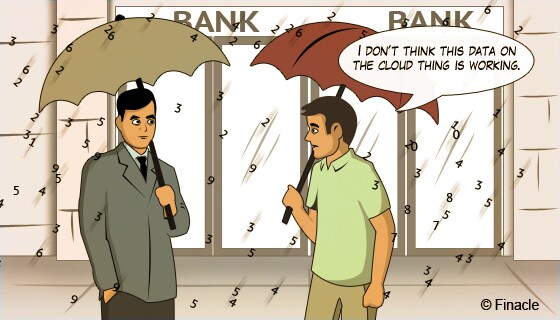> Blogs > CRM Soars to the Cloud
CRM Soars to the Cloud

Globalization brought in its wake the dictum “customer is king.” A couple of decades, slowdowns and recessions later, companies still subscribe to this decree. So much so, that it has spawned an entire business – Customer Relationship Management (CRM) – in a bid to engage this all-important asset, the customer.
CRM refers to the whole gamut of solutions facilitating a company’s interaction with its existing and prospective clients. By simplifying processes and aiding in decision making, a sophisticated CRM solution can steer an enterprise towards success.
Maintaining customer databases and servicing customers are the primary functions of a bank CRM solution. Analyzing data and using it optimally for campaigning, devising offers for specific target groups or streamlining the sales process, are some of the adjunctive ones. It also serves as a tracking tool for managers to efficiently oversee the operations of their teams and to identify and fix any weak links.
Traditional CRM solutions are typically contained within the premises of the bank, accessible only from within its physical boundaries. The benefits of taking this to the cloud are innumerable.
Given the flexibility afforded by the cloud, banks can be selective about the extent of data they transition to it. They can retain customer data by availing cloud services in SaaS (Software as a Service) mode.
Specific modules can be put on cloud and usage enabled by sharing User IDs and passwords. Any updates to the existing modules can be executed centrally with the updated version put on the cloud, which will remain accessible to the bank. The update notification can be sent to the concerned individuals. Also, the bank’s customized settings for a particular application can be updated and saved on the cloud.
Supplementary solutions like alerts, reports etc. can be integrated centrally, with access restricted by user IDs, much like the current licensing mechanism. This principle can be extended across modules, where multiple IDs and passwords for different solutions can be merged into a single ID and password, similar to the accounts linked to one Internet Banking user ID and password.
Need-based access can be created for various functions. Customer care representatives can access their log items from cell phones while managers can similarly monitor their team of representatives remotely. Additionally, data analytics is also made possible from remote locations.
The low implementation and running cost – for maintenance, security, updates and so on – makes it affordable, thus attracting smaller banks to opt for this model. With no dearth of service providers, banks can switch between them easily.
Until the services are actually used, service providers may earn a recurring regular income, rather than capital receipts. The providers in turn, would charge banks a service fee.
Coordinating CRM with social media channels helps connect with those customers who may have shared their experiences and opinions about the bank in question. Given the large user base of these channels and the fact that new channels and tools are added continually, it makes business sense for the bank to integrate SaaS with these social media sites to store this information on the cloud, rather than in a local database.
The customer is central to an enterprise’s success and CRM helps bolster existing customer relationships and foster new ones and also helps to devise ways to combine people, processes and technology to achieve “customer delight.” Cloud CRM does exactly this, but by breaking away from the shackles of a physical location and moving to an Internet-based environment where data can be retrieved at any time and from anywhere.



Gaurav Gupta
More blogs from Gaurav >